Removal Procedure
Caution: Unless directed otherwise, the ignition and start switch must be in the OFF or LOCK position, and all electrical loads must be OFF before servicing any electrical component. Disconnect the negative battery cable to prevent an electrical spark should a tool or equipment come in contact with an exposed electrical terminal. Failure to follow these precautions may result in personal injury and/or damage to the vehicle or its components.
- Disconnect the battery negative cable. Refer to Battery Negative Cable Disconnection and Connection in Engine Electrical.
- Remove the coolant surge tank. Refer to Radiator Surge Tank Replacement in Engine Cooling.
- Disconnect the electrical connector (1) from the brake fluid level sensor.
- Remove the nuts securing the master cylinder to the brake booster.
- Remove the master cylinder from the brake booster without disconnecting the brake pipes and position the master cylinder aside.
- Disconnect the brake booster vacuum hose from the booster check valve.
- Remove the instrument panel lower trim panel. Refer to Driver Knee Bolster Panel Replacement in Instrument Panel, Gages, and Console.
- Remove the retainer, washer, brake pedal pin, and brake booster pushrod from the brake pedal.
- Remove the brake booster mounting nuts and washers from the booster studs.
- In order to remove the booster from the cowl, perform the following steps:
- Remove the brake booster and seal from the cowl.
- Inspect the booster seal and sealing surfaces for damage. Replace the seal if necessary.
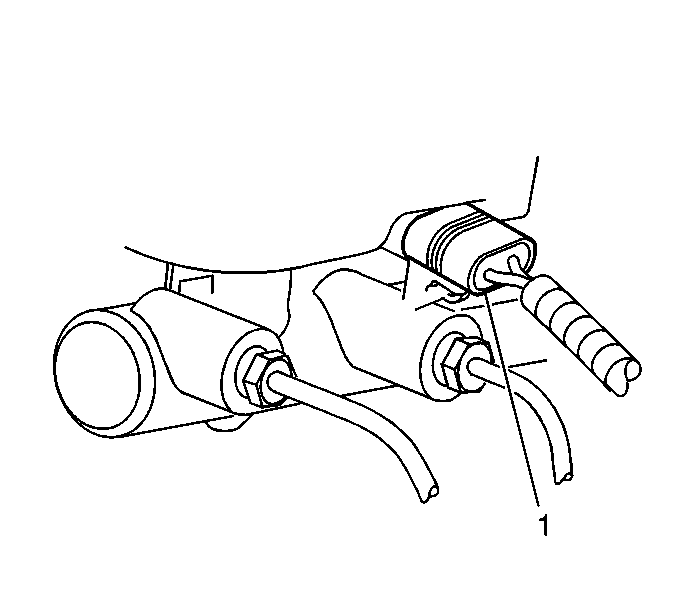
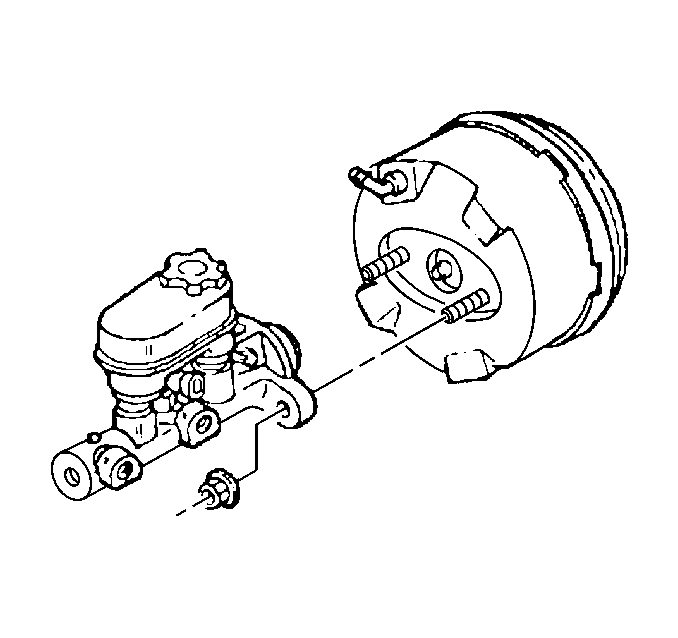
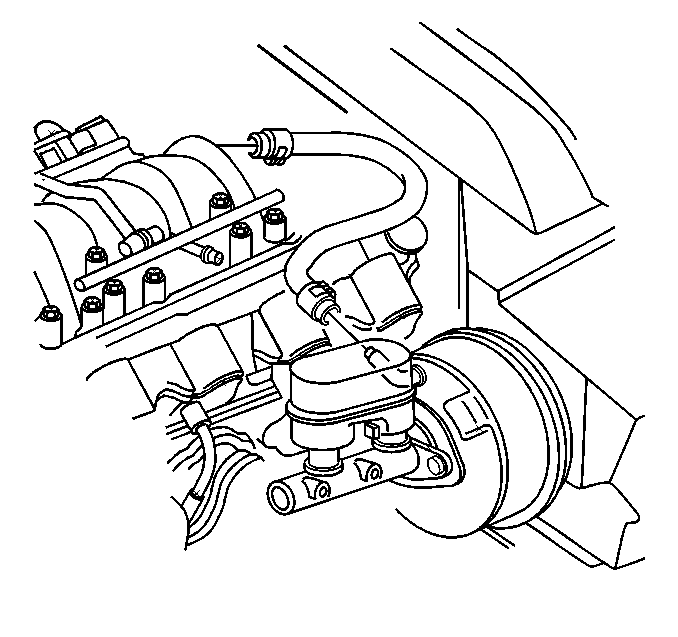
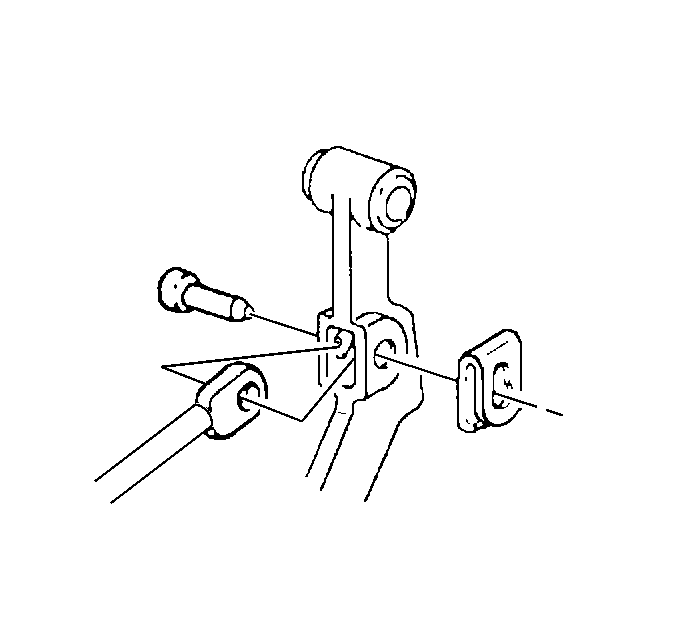
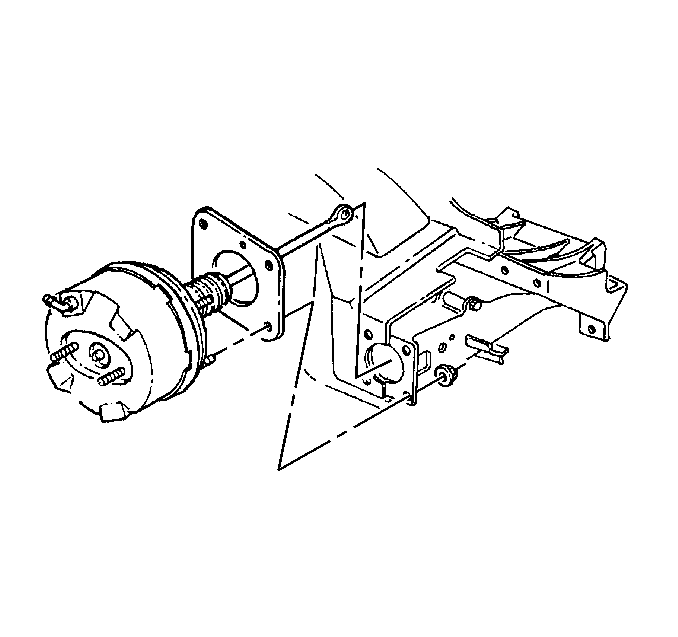
Important: The brake booster is retained to the cowl with push-on nuts.
| • | In order to release the booster mounting studs from the push-on nuts, move booster from side to side. |
| • | Pull the booster straight out. |
Installation Procedure
- Install the seal and brake booster to the front of dash.
- Install brake booster mounting nuts and washers to the booster studs.
- Install the brake booster pushrod, brake pedal pin, washer, and retainer to the brake pedal. Verify proper engagement of the retainer to the brake pedal by rotating the retainer.
- Install the instrument panel lower trim panel. Refer to Driver Knee Bolster Panel Replacement in Instrument Panel, Gages, and Console.
- Connect the brake booster vacuum hose to the brake booster check valve.
- Install the master cylinder to the brake booster.
- Install the master cylinder mounting nuts.
- Connect the electrical connector (1) to the brake fluid level sensor.
- Install the coolant surge tank. Refer to Radiator Surge Tank Replacement in Engine Cooling.
- Connect the battery negative cable. Refer to Battery Negative Cable Disconnection and Connection in Engine Electrical.
- Program the transmitters. Refer to Transmitter Programming in Keyless Entry.

Notice: Use the correct fastener in the correct location. Replacement fasteners must be the correct part number for that application. Fasteners requiring replacement or fasteners requiring the use of thread locking compound or sealant are identified in the service procedure. Do not use paints, lubricants, or corrosion inhibitors on fasteners or fastener joint surfaces unless specified. These coatings affect fastener torque and joint clamping force and may damage the fastener. Use the correct tightening sequence and specifications when installing fasteners in order to avoid damage to parts and systems.
Tighten
Tighten the brake booster mounting nuts to 27 N·m (19 lb ft).



Tighten
Tighten the master cylinder mounting nuts to 29 N·m (21 lb ft).

